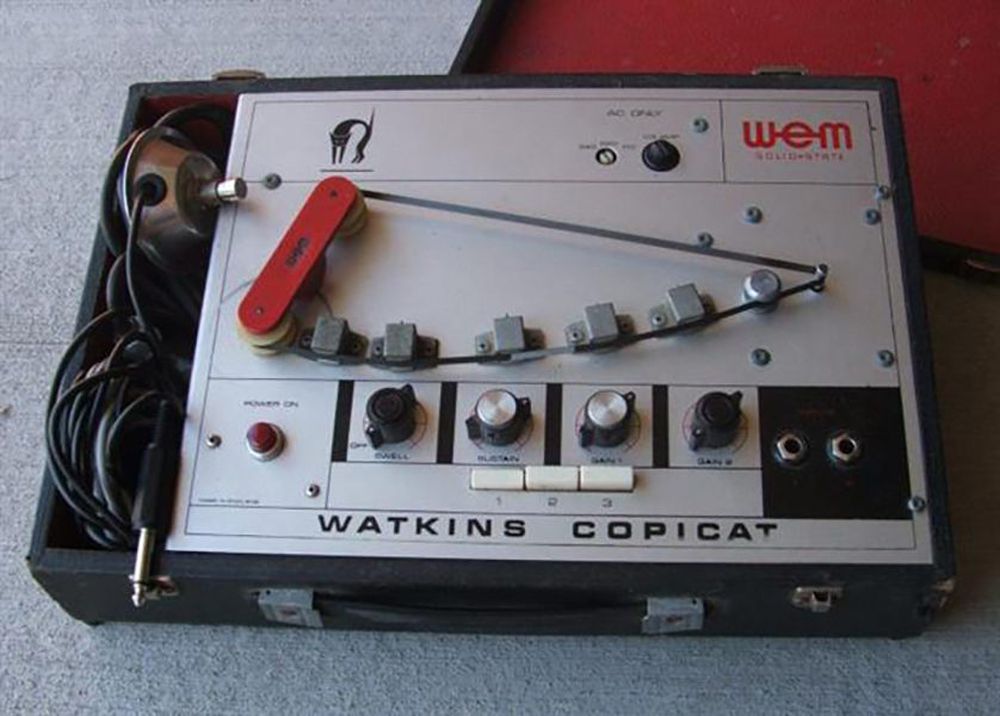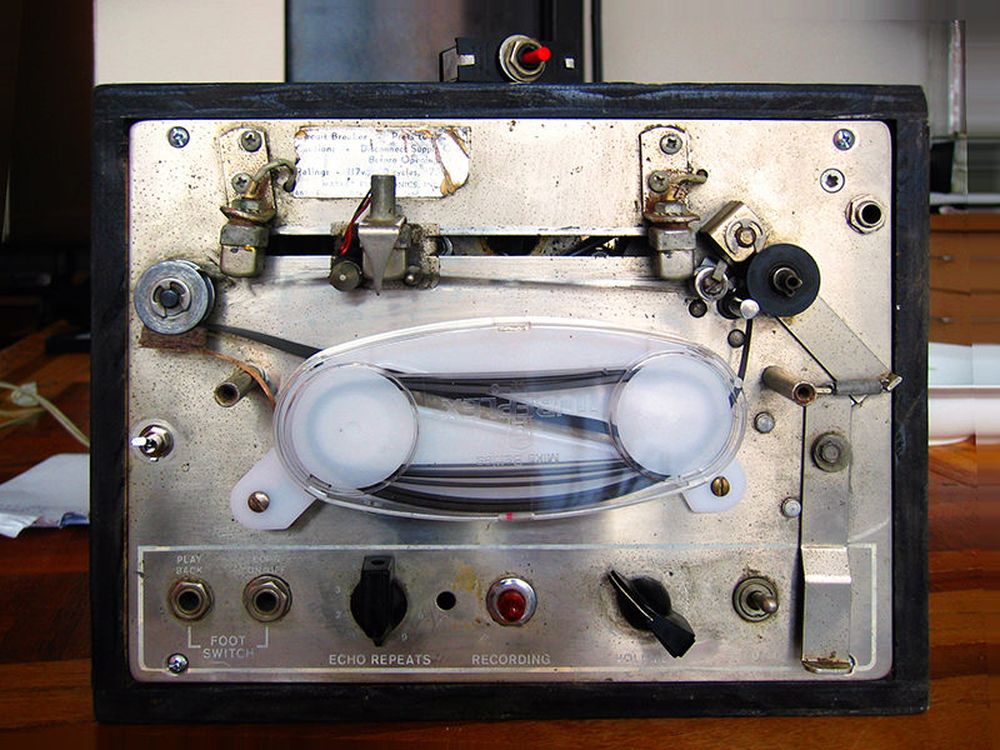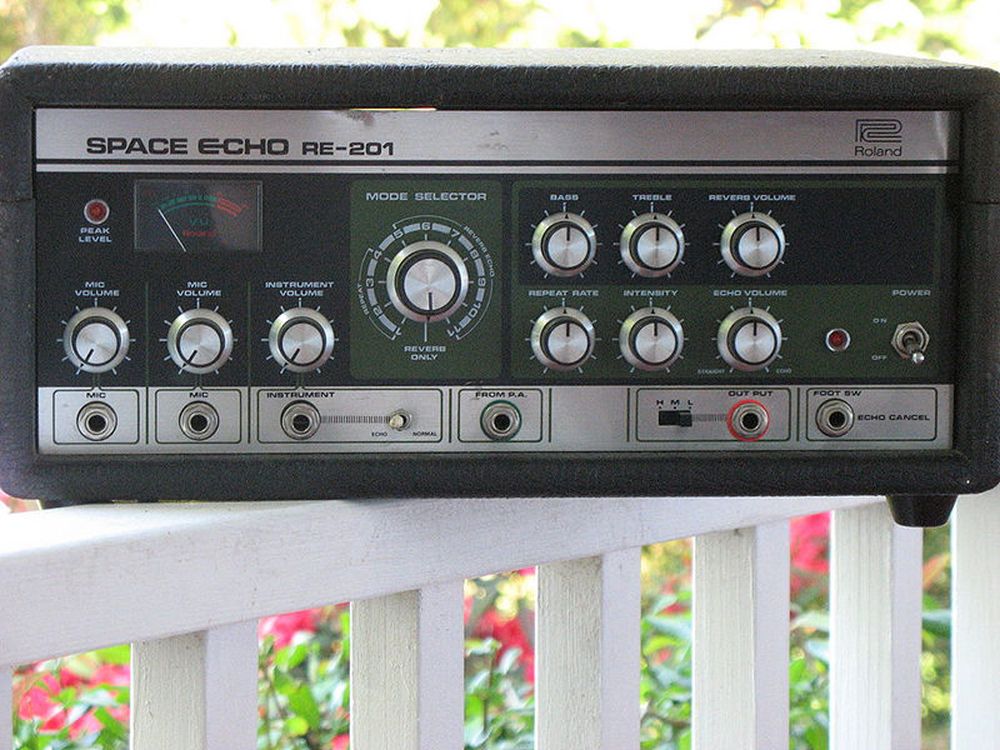2. History
The first way to create an echo effect with a guitar signal was accomplished with a tape, which is why the effect devices equipped with this technology are also called tape echoes or tape delays. The guitar signal is recorded on tape and played back immediately. To achieve an echo effect, there are recording and several playback heads available. The recorded signal is then played back with a delay, depending on how far a playback head is from the recording head. With some devices, you could adjust the playback heads with a slider, influencing the delay time of the echo signal. Clearly, from today's perspective, these rudimentary devices generated rather rough effects and by no means offered the resolution and clarity of today's delay effects. Moreover, the tape echoes of the past had a fairly high base noise, and the quickly wearing magnetic tapes could not provide stability either. The constant recording and playback led to the sound deteriorating over time (getting duller) and other noises creeping in, so the tapes had to be replaced after a certain period of use. However, despite these adverse circumstances, the sound of a tape echo remains very popular. Characteristic are the gradually duller sounding echo repeats, which are also allowed to be somewhat distorted. Additionally, there's a slight modulation effect, as caused by an unevenly running tape.
Origins
Watkins/WEM Copycat (http://www.watkinsguitars.co.uk/copicats.htm)
Maestro Echoplex (https://en.wikipedia.org/wiki/Echoplex)
Roland Space Echo (https://en.wikipedia.org/wiki/Roland_RE-201)
With the development and miniaturization of electronics, the possibilities to generate the echo effect purely electronically and pack it into smaller enclosures also grew. Some manufacturers turned to so-called bucket brigade memory circuits in the 1970s.
These memory chips pass the input signal delayed from storage stage to storage stage like a bucket brigade, generating echoes in this way. The advantage was clear: devices equipped with this technology did not need maintenance, were smaller (pedal form), had improved control options, and longer echo times of up to 600 milliseconds. However, in terms of sound, they still followed the warm sound of traditional tape echoes.
Effect devices that generate echoes in this analog way are still known and popular today as Analog Delay.
Classics
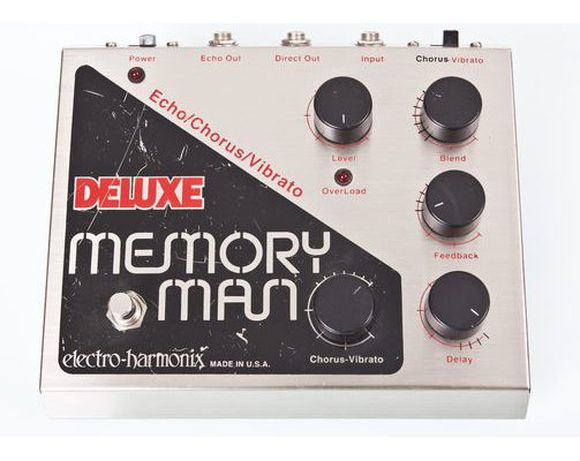
Electro Harmonix Memory Man
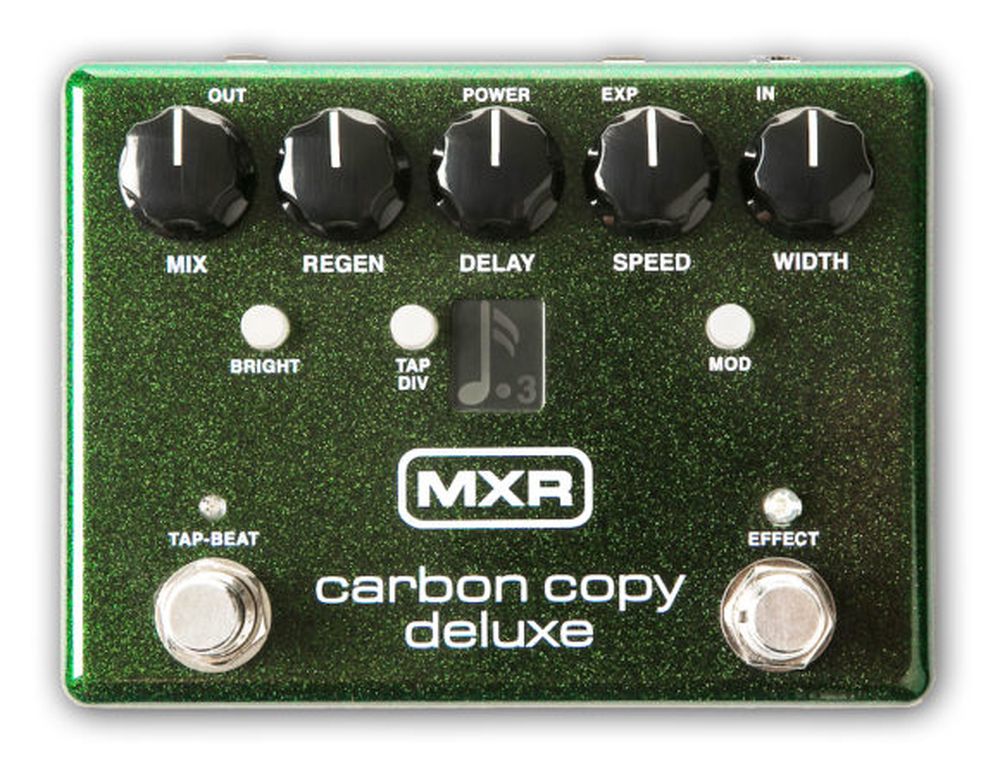
MXR Analog Delay
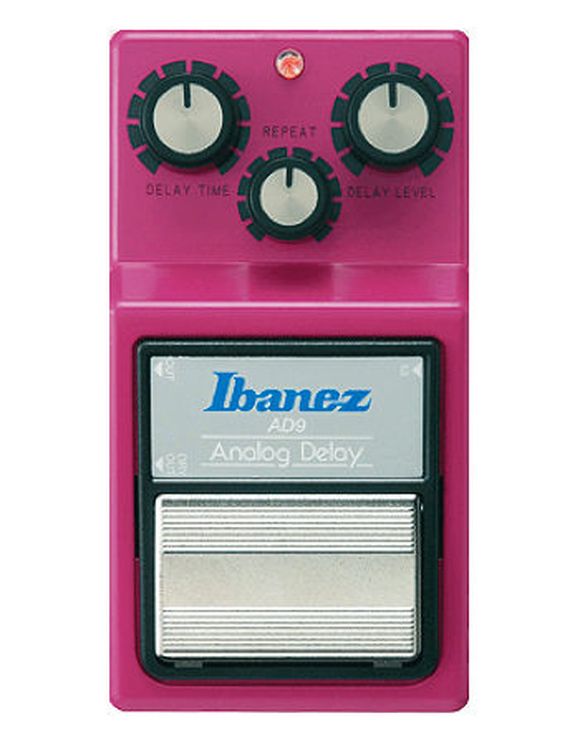
Ibanez AD-9
In the 1980s, when digital technology was advancing, the echo effect was also created with digital means. Digital delay was "state of the art" and opened up new dimensions. With an almost negligible base noise, the crystal-clear echo repeats had a frequency response almost identical to the original signal. The adjustment options were and still are spot-on in every respect with current devices; the delay time can be retrieved in milliseconds, and many other parameters can be adjusted very precisely. But despite the initial enthusiasm and the advantages of digital delays, many guitarists prefer the sound ideal of tape echoes with their warm and natural sound. Meanwhile, there is the best of both worlds, namely delays with digital sound generation, which thanks to powerful DSP chips, are able to produce the characteristic warm and soft tape echo sound quite authentically.
Highlights
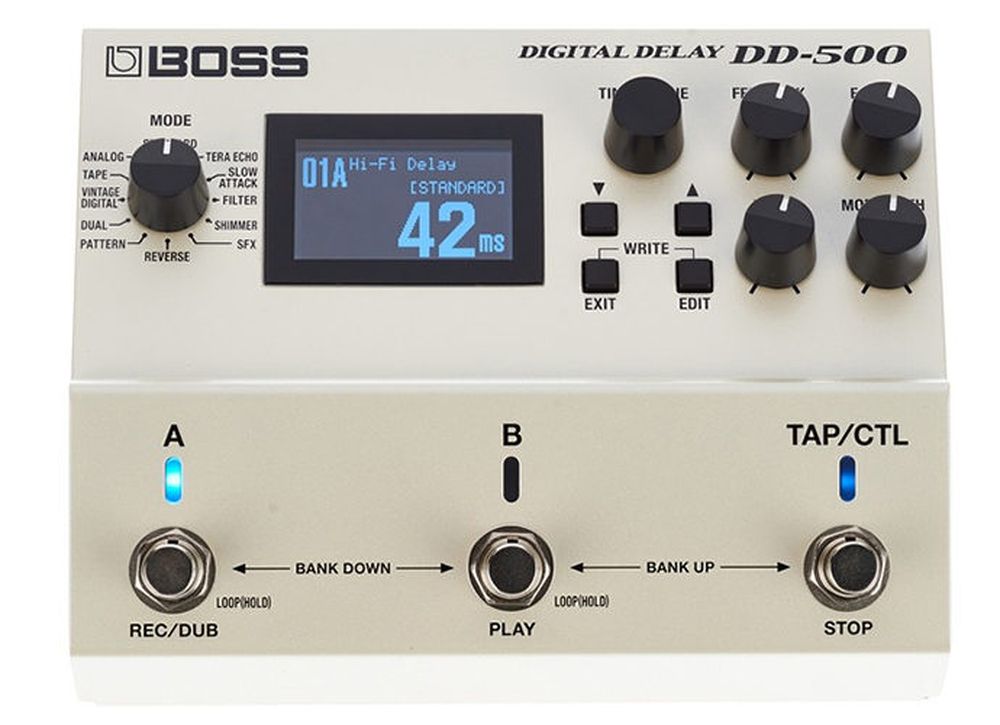
Item Nr. 368490 - Boss DD-500 Digital Delay
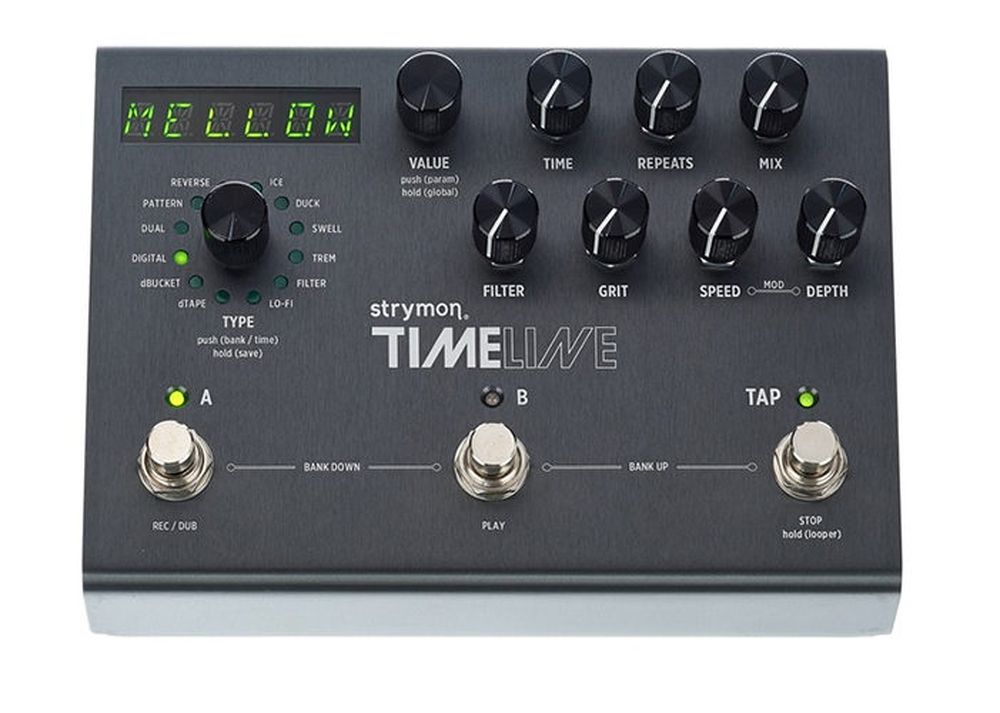
Item Nr. 261034 - Strymon Timeline

Item Nr. 415764 - TC electronic Flashback
Tape Delay
Analog Delay
Analog Delay mit Modulation
Digital Delay


